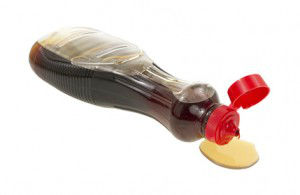
In northern states across the US, as well as in Canada, winter means maple syrup time. Sweet, rich, pure maple syrup is made by simply boiling the sap of the maple tree.
Many families who live in colder climates have a winter tradition of visiting local maple syrup farms, and pouring the hot sap on cold snow. This instantaneously creates a natural ‘rock candy,’ which is a delight for children and adults alike.
While pure maple syrup is a great natural sweetener in moderation, and has recently been labeled a ‘superfood,’ not all syrups are created equal.
Pure maple syrup provides a wealth of nutrients
Pure maple syrup in its natural form provides several important minerals: calcium, iron, magnesium, manganese, potassium and zinc. It also contains a variety of antioxidants, which have an anti-inflammatory effect on the body. These antioxidants help to prevent a host of chronic diseases that are rooted in inflammation, including some cancers.
The polyphenol antioxidants found in maple syrup have been linked to a possible breakthrough in type 2 diabetes prevention. Dr. Navindra Seeram of the University of Rhode Island says, “we discovered that the polyphenols in maple syrup inhibit enzymes that are involved in the conversion of carbohydrate to sugar. In fact, in preliminary studies, maple syrup had a greater enzyme-inhibiting effect compared to several other healthy plant foods such as berries.”
Going overboard – even on the pure variety – can be detrimental
Although the health benefits are exciting, maple syrup is not to be eaten in excess. One tablespoon contains approximately 13.5 grams of carbohydrates, 12.4 of which come from sugar. This sugar is mainly in the form of sucrose – which contains an equal ratio of glucose and fructose.
Our bodies need sugar to survive, however, too much can be deadly. An excess of sugar has been strongly linked to cancers, type 2 diabetes, obesity, inflammation and other chronic diseases. The American Heart Association recommends no more than six teaspoons of sugar per day for the average woman, and no more than nine for the average man.
Even though the sugar found in maple syrup is from a natural food source, large amounts can still spike blood sugar and lead to problems. Maple syrup also contains sodium – about 29 milligrams per cup. While this is not a huge amount, if you overdo it, it adds up. An excess of sodium is a key factor in the development of heart disease.
Stay away from processed syrups!
When choosing maple syrup, be sure to choose 100 percent pure maple syrup, with no added ingredients and as little processing as possible. Processed maple syrups are often boiled with animal fats, anti-foaming agents, polishing chemicals and an array of other additives. Not only do these chemicals pose a risk to your health, the benefits of the maple syrup itself are likely reduced to nothing.
The worst offenders?
Big-name pancake and waffle syrups such as Aunt Jemima. One look at the ingredients list of Aunt Jemima Original Syrup shows that the first two ingredients are corn syrup, and high fructose corn syrup, followed by artificial flavors and colors, as well as preservatives. Not a drop of real maple syrup in the mix. Beware also of syrups that claim to be sugar-free – they often contain harmful sugar substitues such as aspartame.
Oh, Aunt Jemima, we hate that you have disappointed us so;
So to protect our health, we must let you go.
Aunt Jemima syrup ingredient list (from their own website):
Corn syrup, high fructose corn syrup, water, cellulose gum, caramel color, salt, sodium benzoate and sorbic acid (preservatives), artificial and natural flavors, sodium hexametaphosphate
High fructose corn syrup is a type of sugar found in many processed foods, with a higher fructose to glucose ratio. It can be even more dangerous for the body than sugar, because the excess fructose content is absorbed directly by the liver. This can lead to weight gain, inflammation, fatty liver, a dramatic spike in blood sugar and an elevated risk of type 2 diabetes.
In fact, it is thought by many experts that high fructose corn syrup is the driving force behind America’s obesity epidemic. It slows down the body’s secretion of leptin, the hormone which signals to your brain that you are full. This leads to cravings for more and  more high fructose corn syrup.
more high fructose corn syrup.
What about syrup grades?
Some people mistakenly feel that syrup grades have something to do with nutritional value or levels of pureness. In actuality, the grades listed on a syrup, either A or B are only relative to color and taste and often people prefer B because it is thicker, darker and richer than grade A which is an amber color and has a lighter texture. Grade B is frequently used for cooking and baking and A for a stack of flapjacks, however, it is really all about personal preference.
Enjoy real maple syrup, but choose your variety wisely, and don’t overdo it. When you use the real deal, a little goes a long ways!
-The Alternative Daily
Sources:
http://nutritiondata.self.com/facts/sweets/5602/2
http://articles.mercola.com/sites/articles/archive/2000/01/09/killer-sugar-suicide-with-a-spoon-sugar-dangers.aspx
http://www.auntjemima.com/aj_products/syrups/orginal.cfm
http://www.thealternativedaily.com/top-4-ingredients-that-actually-make-you-hungrier-for-more
http://www.heart.org/HEARTORG/GettingHealthy/NutritionCenter/HealthyDietGoals/Sugars-and-Carbohydrates_UCM_303296_Article.jsp

